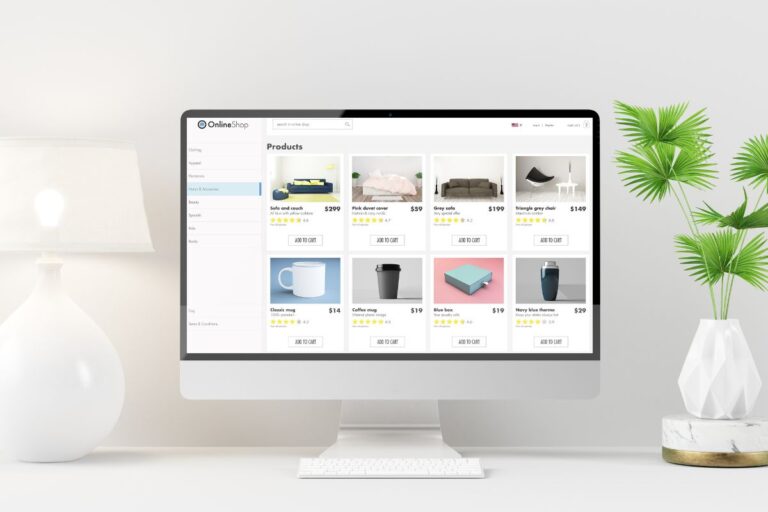In today’s digital age, having a website is crucial for businesses looking to establish a solid online presence, reach a wider audience, and drive growth.
Whether starting a new venture or expanding an existing one, creating a website is a fundamental step toward success.
Website Setup Guide
This website setup guide will help you start a website for your business, covering everything from planning and design to launch and optimization.

1. Define Your Goals and Objectives
Before diving into website development, take the time to define clear goals and objectives for your website. Ask yourself:
- What purpose will your website serve (e.g., showcase products, generate leads, provide information)?
- Who is your target audience, and what are their needs and preferences?
- What specific outcomes do you want to achieve (e.g., increase sales, improve brand awareness, enhance customer engagement)?
A clear understanding of your goals will guide decisions throughout the website development process and ensure that your website aligns with your business objectives.
2. Choose a Domain Name
Your domain name is your website’s online address (e.g., www.yourbusinessname.com). Choose a domain name that reflects your brand identity, is easy to remember, and preferably includes keywords relevant to your business.
Use domain registration services like GoDaddy, Namecheap, or Google Domains to check availability and register your domain.
3. Select a Reliable Web Hosting Provider
Web hosting is where your website’s files are stored and served to visitors when they access your site. Choose a reputable web hosting provider with reliable uptime, fast loading speeds, adequate storage, and good customer support. Popular web hosting companies include Bluehost, SiteGround, HostGator, and others.
4. Choose the Right Website Platform
Selecting the right platform to build your website is crucial for ease of use, flexibility, and scalability. Consider these popular options:
- WordPress: Highly customizable with a vast ecosystem of themes and plugins.
- Wix: User-friendly drag-and-drop website builder with templates for various industries.
- Shopify: Ideal for e-commerce businesses, offering integrated online store functionality.
- Squarespace: Known for its visually appealing templates and intuitive design tools.
Choose a platform that aligns with your technical expertise, budget, and specific website requirements.
5. Plan Your Website Structure and Content
Outline the structure of your website based on your goals and audience preferences. Consider the following pages and content:
- Homepage: Introduce your business and highlight key offerings.
- About Us: Share your company’s story, mission, and values.
- Products/Services: Showcase your offerings with detailed descriptions and images.
- Contact: Provide contact information and a contact form for inquiries.
- Blog/News: Share industry insights, updates, or company news.
- Testimonials: Feature customer reviews and testimonials to build trust.
Create a content plan with compelling copy, high-quality images or videos, and calls-to-action (CTAs) to guide visitors toward desired actions.
6. Design Your Website
Design is critical in user experience (UX) and brand perception. Follow these principles for effective website design:
- Responsive Design: Ensure your website is mobile-friendly and displays correctly on all devices.
- Navigation: Use clear menus and navigation bars to help visitors find information quickly.
- Visual Appeal: Choose a cohesive colour scheme, typography, and imagery that reflect your brand.
- Speed Optimization: Optimize images, minimize plugins, and leverage caching to improve loading times.
- Accessibility: Ensure your website is accessible to users with disabilities, following accessibility guidelines.
If you’re unfamiliar with design principles, consider hiring a professional web designer or using website templates that align with your brand aesthetic.
7. Develop and Customize Your Website
Depending on the platform you’ve chosen, customize your website’s appearance and functionality:
- Install and Customize Themes: Select a theme/template that suits your business and customize it with your branding elements.
- Add Essential Plugins: Enhance functionality with plugins/extensions for SEO, security, contact forms, analytics, etc.
- Integrate E-commerce Features: If applicable, set up online payment gateways, product catalogues, and shopping cart functionality.
Ensure all elements are cohesive, functional, and aligned with your brand identity.
8. Optimize for Search Engines (SEO)
SEO is crucial for increasing organic traffic to your website. Implement these best practices:
- Keyword Research: Identify relevant keywords related to your business and target audience.
- On-Page SEO: Optimize meta titles, descriptions, headers, and content with targeted keywords.
- Site Speed: Improve loading times, optimize images, and leverage caching to enhance user experience.
- Mobile Optimization: Ensure your website is responsive and mobile-friendly.
- Quality Content: Regularly update your website with valuable, informative content that engages visitors and encourages sharing.
9. Test and Launch Your Website
Before launching your website, conduct thorough testing to ensure everything functions correctly:
- Cross-Browser Compatibility: Test your website on different browsers (Chrome, Firefox, Safari, etc.) to ensure consistent performance.
- Functionality Testing: Verify all links, forms, navigation menus, and interactive elements are working correctly.
- User Testing: Gather feedback from friends, colleagues, or members of the target audience to identify usability issues or improvements.
Once you’re confident in your website’s functionality and usability, it’s time to launch!
10. Promote Your Website
After launching your website, promote it to attract visitors and drive traffic:
- Content Marketing: Share blog posts, articles, or infographics on social media and industry forums to establish authority and attract visitors.
- Social Media: Promote your website on platforms like Facebook, Instagram, LinkedIn, and Twitter to reach a wider audience.
- Email Marketing: Build an email list and send newsletters or promotional emails to engage existing customers and prospects.
- Paid Advertising: Consider using Google Ads, Facebook Ads, or other PPC (pay-per-click) platforms to drive targeted traffic to your website.
Monitor website analytics regularly to track visitor behaviour, conversion rates, and ROI from different marketing channels.
Conclusion
Creating a website for your business is a significant step towards establishing a robust online presence, enhancing brand credibility, and driving growth.
By following the steps outlined in this guide—from defining your goals to launching and promoting your website—you’ll be well-equipped to create an effective digital storefront that attracts visitors, converts leads into customers, and supports long-term business success in the digital age.
Embrace the opportunities that a well-executed website can bring and leverage it as a powerful tool for achieving your business objectives.





